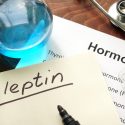Vaginal Yeast Infection Symptoms, Treatments and Remedies
Living with a vaginal yeast infection can be uncomfortable and embarrassing.
While millions of women each year cope with the occasional infection, some must deal with those that recur consistently.
Vaginal yeast infections are so common that nearly three-quarters of all women will have one at some point in their lives (1).
Because this type of infection is so common, it is essential that all women understand how you get a vaginal yeast infection, how to prevent them, and how to treat one should you develop symptoms.
Our guide will help you understand all this and much more regarding vaginal yeast infections, including our top natural remedies you can use at home to treat an infection.
It may seem obvious that a vaginal yeast infection is caused by yeast, but knowing how this yeast forms, why it causes problems, and how to control its growth are all essential for women to know.
The yeast that causes these infections usually are harmless and always present in your body, but sometimes, they can grow to extreme levels that lead to infection and bothersome symptoms.
Vaginal yeast infections are easily treated at home and with natural remedies.
Our guide provides you with many options for managing your vaginal yeast infections with natural ingredients, and we will teach you how to decrease your risk of developing an infection, as well.
What is Yeast Infection?
You currently have millions of yeast organisms living inside your body.
Yeast is beneficial to many critical biological functions and necessary for optimal health.
In nature, yeast and fungus are responsible for many essential natural functions, like the decay of dead material and fermentation.
In the same way, the yeast in your body is necessary for you to be healthy.
A vaginal yeast infection is caused by Candida albicans, which is a species of yeast found in many parts of your body.
When you have an overgrowth of this type of yeast, you have what is known as candidiasis.
While yeast and other forms of fungi are similar to plants in many ways, they are different in one crucial aspect.
Whereas plants require the sun to help them make their food using chlorophyll, fungi can make their own food.
This is how they are able to multiply and spread so easily within the human body (2).
Vaginal candidiasis, or vaginal yeast infections, are explicitly caused by this strain of fungus.
There are other types of infections that cause vaginitis, which is inflammation or infection in the vagina, but yeast infections are the most common.
When you have recurrent infections, this is known as recurrent vulvovaginal candidiasis (RVVC).
Other types of vaginitis include bacterial vaginosis, non-infectious vaginitis, and trichomoniasis (3).
Several conditions may contribute to your likelihood of developing a vaginal yeast infection, and others may be exacerbated by a vaginal yeast infection, as well.
If you have recurrent infections, it may be necessary to see a physician to determine if other medical problems may be contributing to your symptoms.
Symptoms
You can develop yeast infections in many different areas of your body.
Any place that has good host conditions will support yeast growth, including moist, damp areas of your skin and body.
The areas most prone to fungal outbreaks or infections include (4):
- The genitals
- Inside the throat or mouth (called thrush)
- Anal area
- Armpits
- Navel, or belly button
- Around the nose and inside the nasal cavities
- Under fingernails and toenails
- Inside the digestive tract
- Between toes and fingers
Vaginal yeast infections occur when yeast overgrows inside the vagina.
Symptoms of this type of infection include:
- White, clumpy, thick, or odorless vaginal discharge.
- Vaginal itching, which can be severe and very uncomfortable.
- Redness, swelling, and irritated skin around the vaginal opening.
- Pain in and around the vagina, especially during menstruation or during sex.
- Vaginal bleeding, usually slight.
- Pain while urinating.
- Slight unusual odor.
The symptoms of a vaginal yeast infection are relatively obvious, and they may be uncomfortable for many, especially if left untreated.
Many who have a vaginal yeast infection may mistake the symptoms for something else.
It is not uncommon for people with vaginal yeast infections to assume their symptoms are due to side effects from birth control, a sexually transmitted infection, or a urinary tract infection.
If you have a yeast infection on any part of your body, it can spread to other areas.
It is, therefore, necessary to treat a yeast infection as soon as you notice symptoms and to ensure you do not spread the fungus to other parts of your body.
Causes of Yeast Infections
At this moment, you have millions of yeast cells on and inside of your body.
There are actually several hundred species of yeast that exist in most humans, and they survive in all types of hospitable environments throughout your body.
Only a tiny percentage of these yeast cultures can be harmful to you, and even then, only under specific conditions.
Your skin is the most common place to find yeast on your body.
Yeast is also commonly found inside your nose, mouth, armpits, throat, and intestines, as well.
Candida, the type of yeast that causes vaginal yeast infections, plays a vital role in your digestive system, as well, helping to break down your food and waste particles in your large intestines.
Candida yeast, when adequately controlled, is beneficial to your metabolic functions.
When it proliferates and crowds out other microbes and bacteria, problems can arise (5).
Understanding how this infection grows and ways to prevent yeast overgrowth are crucial to preventing and treating vaginal yeast infections.
An example of Candida yeast run amok is oral thrush in infants.
Nearly all newborns are exposed to Candida yeast from their mothers, either at birth or within the first six months of life.
When a baby’s immune system is functioning normally, they have no problem controlling the yeast and keeping it at acceptable levels.
If their immune system is not working well, though, the Candida can grow out of control, and the infant develops an infection in the mouth or throat called oral thrush.
This example illustrates how having a robust immune system can be very beneficial to keeping your Candida in check.
If your immune system is healthy, you should be able to maintain the proper balance of all the various microbes your body needs to be healthy.
These microbes help keep your Candida levels in check, preventing problems from forming.
Certain strains of good bacteria are particularly helpful at keeping levels of Candida low.
Lactobacillus acidophilus is present in many areas of your body, including your vagina, and prevents yeast and other invaders from taking over.
When yeast are given conditions that allow them to reproduce rapidly, they can grow and take over quickly, though.
For example, when you take antibiotics, you actually destroy many of the good bacteria in your system that keep Candida under control.
Hormonal imbalances can provide yeast with opportunities to grow rapidly, as well, which is why many pregnant women develop vaginal yeast infections.
Candida albicans and other fungi within your body are always looking for sources of nutrition that will allow them to multiply.
Once a source is located, yeast can reproduce very quickly.
Just like humans, fungi use enzymes to digest their food. When too much yeast is present in one area, an infection can occur.
There are several factors that can increase your risk of contracting a vaginal yeast infection.
Taking antibiotics can definitely increase your risk, as can pregnancy.
If you take birth control pills, have a hormonal imbalance, or are on hormone replacement therapy, your chances are higher.
The environment in your vagina is more hospitable to Candida after sexual intercourse, so proper hygiene is important.
If your immune system is impaired, due to HIV or an autoimmune disorder, you may develop a vaginal yeast infection.
When your hormones shift around your menstrual cycle, conditions are better for the yeast to develop.
Uncontrolled diabetes can lead to yeast infections, as can poor hygiene and wearing damp clothing (6).
Natural Treatments for Yeast Infections
If you think you have a vaginal yeast infection, there are many treatments and remedies you can try at home to help alleviate your symptoms, control your body’s production of Candida albicans, and get your system working normally again.
Making changes to your diet to control Candida growth can take some trial and error.
Each of us reacts differently to various foods, so finding the right combination of foods in your diet may be tricky.
If you suffer from recurrent infections, though, this could be worth your time and energy.
The following are our best suggestions for natural treatments for helping you handle your vaginal yeast infection at home.
Use Proper Hygiene
Yeast needs the proper conditions to multiply to levels that are harmful, so denying them the appropriate environment is the first line of defense against infections.
Keeping your skin dry, clean, and free of scratches or other unwanted openings are going to be important.
Make sure you always treat abrasions and other skin problems immediately to prevent infection, which is a prime way yeast can enter your body.
Keeping your genitals clean will help, as will drying the area well after showing.
Always wipe from front to back to avoid spreading germs, and if you are active and sweat a lot, be sure to shower often and dry your genitals regularly.
Preventing the moist, warm environment where yeast thrives means they won’t have a place to reproduce.
Always make sure you wash your genitals after sex.
Both men and women can develop yeast infections in the genitals, and these infections can be transmitted during sex.
If you have an active infection, abstain from sex, and practice safe sex at all other times to avoid the spread of diseases (7).
Your Clothes Matter
Your clothes should always be clean, but when you want to prevent a vaginal yeast infection, be especially sure you are wearing clean underwear.
Choose breathable fabrics that allow moisture to escape.
Keeping your genitals clean and dry will again go a long way toward preventing yeast from growing (8).
If you have a yeast infection or are prone to them, you may also want to avoid tight-fitting clothing, such as pantyhose, tights, and bathing suits.
These can trap heat and moisture, providing optimal conditions for yeast growth.
If you wear a bathing suit, do not stay in one that is wet for many hours, as this can significantly contribute to yeast’s ability to grow.
Consider Medical or Hormonal Problems
When your body is unable to regulate your hormones properly, or when other metabolic functions are hindered, conditions become prime for Candida albicans to reproduce uncontrollably.
The most common medical and hormonal problems that contribute to vaginal yeast infections are Type 2 diabetes and hormonal imbalances associated with menopause, menstruation, and pregnancy.
People with diabetes have high blood glucose, or sugar, levels.
Because sugar is a food source for Candida yeast, when you have too much sugar in your blood, these yeast cells can overgrow easily.
Those with diabetes are more likely to suffer from vaginal yeast infections because their bodies produce hospitable conditions that allow the yeast to flourish (9).
Controlling your blood sugar and sugar intake is, therefore, key to decreasing your risk of infection.
Females produce a hormone known as progesterone, which is responsible for producing glycogen in your body.
Glycogen is a natural starch (sugar), which provides fuel for yeast cells to grow.
When your progesterone levels exceed normal ranges for your body, it can trigger an imbalance that contributes to yeast overgrowth (10).
Variations in progesterone levels are common during the menstrual cycle, menopause, pregnancy, and when taking oral contraceptives (11).
Be Kind to Your Skin
The skin in your vaginal area is very sensitive, and harsh chemicals, cleansers, scents, and other products can irritate it and cause infections.
When you throw off the natural balance of your vaginal area, bacteria and yeast can take hold.
You may be allergic to latex condoms, soaps, hygiene products, bath oils, spermicides, tampons, or douches.
Any of these can cause irritation, which creates a hospitable environment for yeast to grow.
If you have a vaginal yeast infection and recently started using a new product, discontinue using it altogether.
Consider natural products instead.
Look for those that are free of perfumes, harsh fragrances, dyes, or other chemicals that may cause a reaction from your sensitive skin.
There are many natural products on the market today, so finding alternatives is easier than ever before.
If you regularly douche, you may want to discontinue this habit entirely.
There is no evidence to suggest that douching has health or hygiene benefits, and it can actually destroy the helpful bacteria that control yeast production.
Douching has been linked to other health issues, including bacterial vaginosis, pelvic inflammatory disease, complications during pregnancy, and cervical cancer (12).
Eat Foods Rich in Probiotics
You can boost your immune system and help it fight Candida albicans with a nutrient-dense diet and eating plenty of probiotics.
Your immune system’s protective white blood cells target problems early, which can often prevent infections from forming, so keeping your immune system healthy is an integral part of preventing vaginal yeast infections.
If your immune system is already compromised, due to diabetes, cancer, HIV, an autoimmune disorder, or another medical condition, you must be diligent to prevent yeast infections from forming.
A nutrient-rich diet will support your immune system.
Eat lots of fresh vegetables, high-quality sources of protein, healthy fats, and probiotics.
Lactobacillus, acidophilus, and other probiotics are beneficial for keeping yeast growth in check, so they can help you fight an infection, should one occur (13).
Fermented foods are also excellent sources of probiotics.
Kefir, yogurt, kimchi, sauerkraut, and kombucha are all fermented foods that will restore your natural probiotic microflora, which can fight yeast reproduction.
Because these microbes compete with yeast for available food sources, these good bacteria are able to prevent fungi like yeast from over-expanding.
Control Your Sugar
Sugar is an excellent food source for Candida yeast, so keeping your blood sugar levels in check will be necessary for preventing yeast infections (14).
If you have severe problems with Candida overgrowth, have recurrent infections, or are experiencing gastrointestinal difficulties with Candida overgrowth, you may need to eliminate sugar from your diet completely.
Temporary, complete elimination of sugar can help you clear the overgrowth and stop problems with yeast in your body.
Eliminating processed foods, most grains, alcohol, dairy products, and most starchy vegetables and fruit may become necessary, at least for a short time.
Use Essential Oils
Essential oils are great for use in a yeast infection as they are antiseptic, antifungal, anti-inflammatory and cause less or no side effects.
A natural anti-fungal, tea tree oil has been used to treat fungus and yeast for many years.
Research indicates tea tree oil is particularly effective at managing Candida albicans, which is responsible for most vaginal yeast infections (15).
Tea tree oil can be very strong, and because the vaginal skin is sensitive, this remedy should be used with caution.
The most popular method of using tea tree oil to treat a vaginal yeast infection is to create a suppository.
Take one ounce of coconut oil and warm it. Add a few drops of tea tree oil, then rub the oil mixture into a tampon.
Insert into the vagina and leave overnight (16).
Because some people can be allergic to tea tree oil, you want to test your skin first before using this method.
Dab the diluted oil on your forearm, creating a patch about the size of a dime.
Leave for twelve hours. If you have no reaction, it is likely safe to use.
Oregano oil is another option for treating vaginal yeast infections naturally.
When selecting your oil, you want to use oil made from wild oregano, known as Origanum vulgare, rather than common oregano.
Wild oregano has natural antifungal properties which make it effective in treating yeast overgrowth (17).
Create a suppository using a tampon and the essential oil and a carrier oil, such as coconut or olive oil.
Change the tampon every four to six hours.
As with tea tree oil, you should test your skin’s sensitivity to the oil before using it in your vaginal area.
Wild oregano capsules are also available and can be used as a suppository, as well.
Bathe in Apple Cider Vinegar
Apple cider vinegar is another popular natural remedy for treating vaginal yeast infections.
You can add one-half cup apple cider vinegar to a warm bath, and soak for 20 minutes to help eliminate the harmful microorganisms that are causing your yeast infection.
Vinegar’s natural properties work gently to restore the natural balance of your vaginal region to inhibit yeast growth.
Supplements Can Be Helpful
Supplements can help you boost your immune system and restore your body’s natural balance of good and bad microbes.
The following supplements can be helpful if you are suffering from a vaginal yeast infection.
- Probiotics – If your diet does not contain many natural sources of probiotics, you can use supplements to restore your natural supply. Look for ones with live active cultures.
- Antioxidants – Vitamin C and other antioxidants will boost your immune system, helping it to resist any infection you may have.
- Milk thistle and elderberry – If you take birth control pills or other prescription medications that impact your hormone levels, these supplements can help cleanse their effects from your liver and body.
Use Boric Acid
Boric acid can be especially helpful for treating recurrent vaginal yeast infections.
Using a 600-milligram capsule as a suppository every day for two weeks can restore natural balances in the vagina important for controlling yeast growth (18).
Boric acid has also been shown to increase the effectiveness of antifungal medications traditionally used to treat vaginal yeast infections.
If you have an infection that has not responded to traditional medications or other treatments, boric acid may help you finally get rid of your infection (19).
Try Over-the-Counter Treatments
There are many traditional over-the-counter medications that successfully treat vaginal yeast infections, as well.
Creams and suppositories containing anti-fungal medications are available without a prescription and can be purchased at most drugstores, pharmacies, and grocery and discount stores.
Some are meant to be used internally, while others are applied on the outside of the vagina.
Each medication is different, so read the label carefully.
You will likely need to treat your infection over a period of several days, and some even take a week to be fully effective.
The antifungal medicines known as azoles are most commonly used in internal treatments, which can cure nearly eight in ten cases of a vaginal yeast infection (20).
Determining if You Have Yeast Infection
It can be easy to confuse the symptoms of a vaginal yeast infection with other medical problems.
If you have never had a yeast infection before, it is advisable that you see your doctor for proper diagnosis.
Other medical conditions that can produce similar symptoms include:
- Allergic reactions to soaps, detergents, and other hygiene products.
- Lowered levels of estrogen, which creates vaginal dryness and itching.
- Sexually-transmitted diseases that cause vaginal odor and itching. These include herpes, genital warts, chlamydia, and trichomoniasis. All of these should be treated immediately by a doctor.
- Hemorrhoids that cause itching in the vaginal area.
- Small cuts or other skin issues that have created an infection in the vaginal area.
Your doctor will be able to rule out anything else that may be causing your symptoms, and recommend the right treatment for you.
Your menstrual cycle’s change in hormone levels can result in a vaginal yeast infection, and the onset of your period may resolve your symptoms.
If you are expecting your period and have the symptoms of a vaginal yeast infection, it is okay to wait a few days to begin treatment, as the conditions that are supporting the yeast may be naturally eliminated during your menstrual cycle.
If your symptoms persist, though, see your doctor or begin at-home treatment.
Always see your doctor right away if you have unexpected bleeding.
Your doctor will likely conduct a pelvic exam to diagnose your vaginal yeast infection accurately.
Blood work or other cultures may also be ordered.
The most common prescription treatment for a vaginal yeast infection is an oral antifungal like fluconazole, which is known by the brand name Diflucan.
Your doctor may instead recommend over-the-counter treatment using one of the medicines previously described (21).
If you have a recurring infection that you have already treated at home, prescription medications may help address the cause rather than just the symptoms of your vaginal yeast infection.
Precautions
If you have had a yeast infection before and are pretty sure it is the cause of your current symptoms, you can treat your infection at home on your own easily.
If you do not address the cause of yeast overgrowth, though, and only treat your symptoms, you are likely to experience recurring infections.
Yeast cells proliferate under the skin and inside your body, so just treating the problem topically will not resolve the problem fully.
You must deprive the yeast of the conditions that allow it to thrive if you want to eliminate the Candida albicans completely.
Some doctors recommend antibiotics, in some cases.
Remember, though, that antibiotics will destroy all your good bacteria, as well as any bad bacteria that are causing infection.
This leaves you vulnerable to yeast returning quickly and establishing a new infection, so be wary of this option if at all possible.
There are many natural remedies and treatments you can use at home to help you prevent and treat a vaginal yeast infection.
The most important reminder is to make sure you are stopping candida yeast overgrowth by controlling the conditions in which it thrives.
Stay dry and clean, eat foods that promote the control of yeast growth, and treat your delicate vaginal skin gently.
If you find you do have an infection, try apple cider vinegar, essential oils, boric acid, supplements, and probiotics to treat the condition at home.
Over-the-counter medications are widely available and effective if used to treat the cause of the infection, not just the symptoms.
See your doctor if you develop other symptoms that cannot be explained by a yeast infection.
Other, severe medical conditions are often mistaken for a vaginal yeast infection.
These should be treated by a doctor, and include STDs and severe hormone imbalances.
While annoying, a vaginal yeast infection is not often serious.
With proper treatment, it will resolve quickly, and you will be feeling normal again very soon.
FDA Compliance
The information on this website has not been evaluated by the Food & Drug Administration or any other medical body. We do not aim to diagnose, treat, cure or prevent any illness or disease. Information is shared for educational purposes only. You must consult your doctor before acting on any content on this website, especially if you are pregnant, nursing, taking medication, or have a medical condition.
HOW WOULD YOU RATE THIS ARTICLE?






